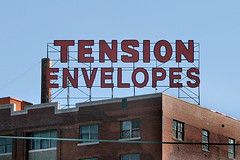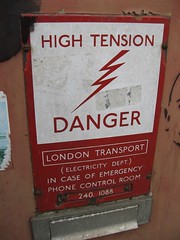THIS is what made the real leap to publishability for me more than any other ingredient in the secret sauce! (Naturally, this will vary from writer to writer and manuscript to manuscript, but it really made a difference for me!)
 I firmly believe that tension is necessary in every scene. That doesn’t mean every scene has to be a nail-biter or a fistfight or an argument—but there does need to be some source of tension, some uncertainty, something to compel the reader to find. out. what. happens.
I firmly believe that tension is necessary in every scene. That doesn’t mean every scene has to be a nail-biter or a fistfight or an argument—but there does need to be some source of tension, some uncertainty, something to compel the reader to find. out. what. happens.
I use these steps (still!) to figure out if I have that in my scenes and my story.
Step 1: Assess the current tension
I like to use that handy-dandy scene chart to do this! As I mentioned before, for each scene, I list the POV character’s goal. Scene goals aren’t just for the beginning and end of scenes. You can use The goal can be the source of tension—and if there’s no goal, there’s often no tension.
One way to look at this visually is to use a numerical tension rating in your scene chart. In most spreadsheet software, you can create a line graph from that column of data—Kaye Dacus calls this an “EKG” for your story (you know, an electrocardiogram? Like a heartbeat chart?).
Also in the scene chart, I like to devote a column to writing out what the source of tension is supposed to be in the scene. Is it hoping the character achieves the scene goal? Is it the fact that she’s undercover? Is it the romantic tension?
Step 2: Identify problem scenes and sections
 While there are also good uses for parallels, scenes with the same character goal are often a sign that the character isn’t making enough progress. While we definitely don’t want to make things easy for our characters, watching a character fail repeatedly at the same thing wears down the suspense. We may begin not to care whether they’re going to succeed or not, unless each scene has high tension—or the character goal can be refined to relate to the specific events, conflict and disaster for that scene.
While there are also good uses for parallels, scenes with the same character goal are often a sign that the character isn’t making enough progress. While we definitely don’t want to make things easy for our characters, watching a character fail repeatedly at the same thing wears down the suspense. We may begin not to care whether they’re going to succeed or not, unless each scene has high tension—or the character goal can be refined to relate to the specific events, conflict and disaster for that scene.
But probably most important in the EKG are the sections where the tension level doesn’t change or varies only slightly for several scenes in a row. In Writing Mysteries, one writer shared some advice from an editor: “I must not try to keep everything at high pitch all the way through a story. Excitement, if too steady, can be as boring as having nothing at all happening” (109).
Naturally, at the climax of a book, the tension will be quite high, probably for several scenes. But is the tension flat in there? Are there other “plateaus” or “plains”? Does the tension start out much higher than it ends?
If the end isn’t satisfying because it doesn’t match the tension of the rest of the book, don’t lower the suspense! Fix the end!! Change things up in plains and plateaus—if you can, add what looks like a reprieve, or a rest for a little bit before plunging them back into danger, and keep the danger or at least the tension going until as close to the end of the book as you can. Find another source of tension for those wrap up chapters if you have to. (This is where I STILL need work on early drafts!)
Step 3: Fix!
For low tension scenes (in fact, for my “secret sauce” manuscript, I did this for EVERY scene), I look back at that “source of tension” column in my scene chart. I look for ways to incorporate that source of tension more:
- Refer back to the scene goal. By reminding the readers what the character is after—and showing the growing disparity between her goal and reality—we can draw the reader along through the scene.
- Remind the reader of the stakes or impending doom.
- Add or increase an emotional response from the POV character to the source of tension
- If that’s not possible—say, if the source of tension is something that the reader knows but the POV character doesn’t—have another character highlight or allude to the source of tension
- Again, if the source of the tension is something that the reader knows that the POV character doesn’t, see if you can add another scene (usually immediately before this one) to remind the reader of the dramatic irony (yay 9th grade English!)
- Highlight the source of the tension in a few character actions and thoughts throughout the scene. The exact number depends on the length of the scene, but it’s always good to hit on it near the beginning, and at least twice more in an average-length scene (whatever that might be for you).
On the other hand, sometimes that’s just not enough. If the source of tension is non-existent or insufficient, I look for ways to increase the tension, usually by asking myself questions like these:

- What is the character’s goal for this scene?
- How can things get worse?
- How can I raise the stakes?
- What is the source of conflict in this scene and how can I make the conflict bigger?
- How can I weave in the antagonist, the plot, a subplot or a character turning point?
- Who is the worst person who could walk in right now?
- What would happen if this scene took place somewhere else?
- What is the character feeling and have I shown it enough on the page?
Janice Hardy also offers a list of things to look at to help make your scenes matter (and there’s some overlap, but I wrote out my mental list before reading her post):
- What is your protag doing?
- Where does this scene take place (setting)?
- Who else is in the scene?
- Where structurally does this scene take place (act one, midpoint, act two, etc)?
- What happens right before this scene?
- What happens right after this scene?
- What’s your theme?
- What are the stakes?
Sometimes, it’s less the scene itself and more the context it’s in—either the spikes in your EKG are too sharp, or you’ve got a major plateau. My critique partner, Emily Gray Clawson, wrote a great post on keeping up the tension in your story by switching between types of tension or storylines.
Finally, I have a whole series on Tension, Suspense and Surprise with 35 pages on the importance of those elements in your story—and dozens of ways to fix them if they’re off—now available as a free PDF.
What do you think? Have you checked your tension lately? How do you fix low-tension scenes?
Photo credits: tension envelopes—Chris Murphy; question mark—Alexander Drachmann; high-tension wires—Redvers

